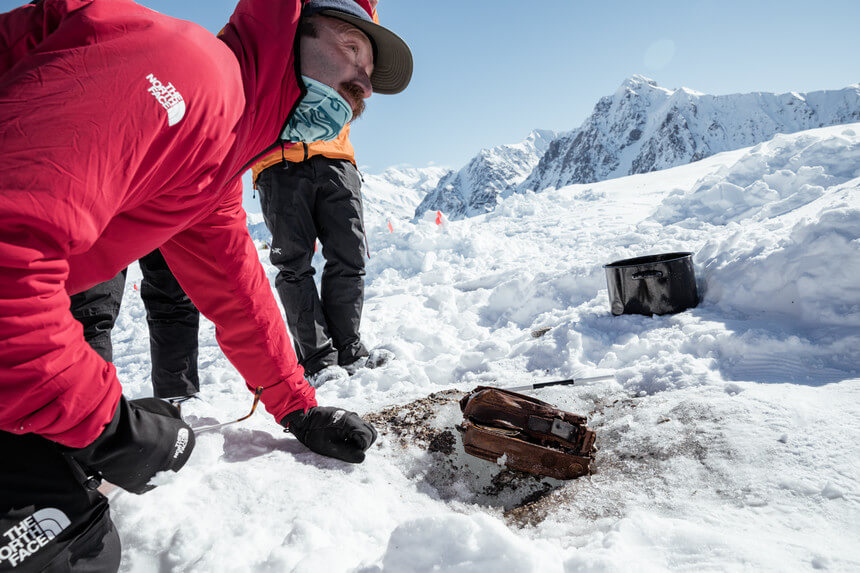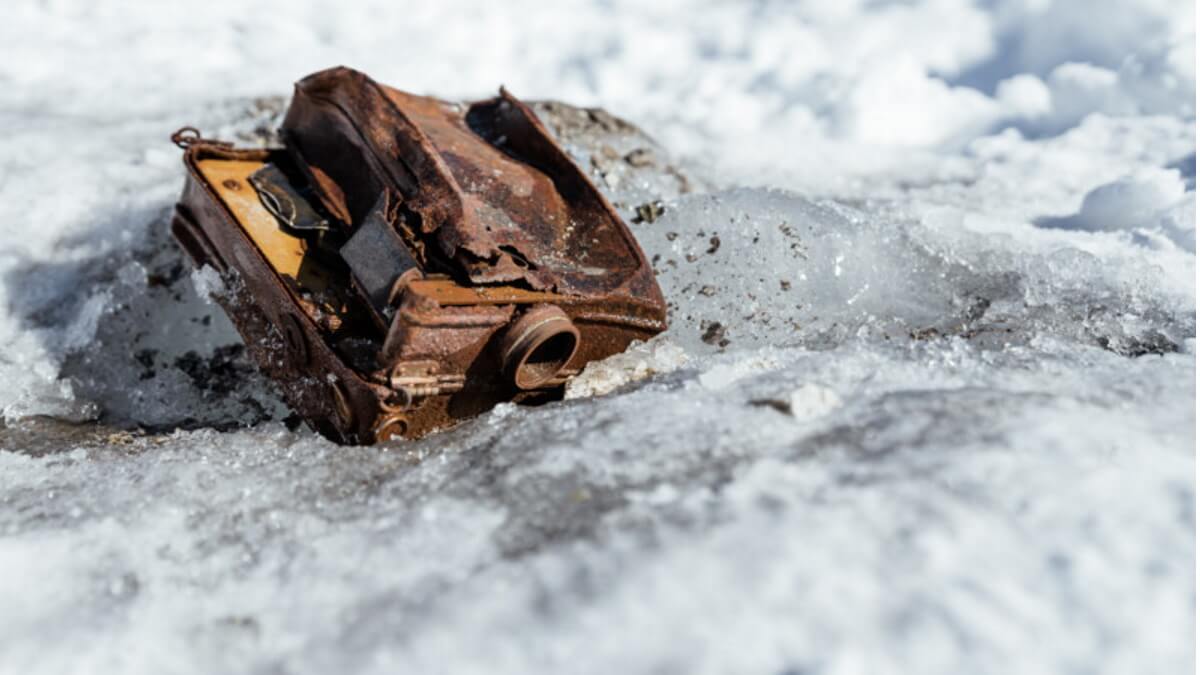A message from the distant past? Three cameras abandoned 85 years ago by two explorers and pioneer photographers were discovered on a glacier in Yukon, Canada.
In 1937, pioneering aerial photographer Bradford Washburn and his partner Robert Bates were forced to flee and, in order to travel light, they had to leave their cameras behind.
Now, that equipment has been discovered and in some of the cameras there was even film but that’s not the only landmark victory. The cameras were found by outdoor exploration media company Teton Gravity Research, led by professional mountain explorer Griffin Post.

In the picture above you can see Griffin Post at the discovery site of Bradford Washburn’s abandoned 1937 camera cache, in a photo by Leslie Hittmeier.
“While there’s the obvious historical value in retrieving these artifacts, particularly the camera and film from one of the most legendary aerial photographers in history, the scientific value of the find is equally important, providing researchers with a data point to calculate glacier movements in the area that predates any other data point by decades,” explained Post.
The main camera found was a Fairchild F-8 aerial, which, according to Petapixel, Washburn later used to capture incredible shots by removing “an airplane door to secure his camera and himself to the plane.”
Alongside it were two motion picture cameras, a DeVry “Lunchbox” model pictured in the first image (photo by Leslie Hittmeier) and a Bell & Howell Eyemo 71A. Both have film still loaded in them.
Not only are those artifacts incredibly valuable and will be presented to the public in a documentary, but they also allow scientists to track the shifting of ice in a glacier over multiple decades.
As for the story of the original explorers, it’s a fascinating one:
“Washburn and Bates, members of the Harvard Mountaineering Club embarked on an attempt to climb the then highest unclimbed peak in North America, Mount Lucania. The 17,150-foot summit lay in wildly inaccessible terrain deep inside the Saint Elias Range, straddling the border of Alaska and the Yukon amidst the planet’s largest non-polar ice cap.
The young and eager Washburn already had several unsuccessful attempts to climb big peaks, but in 1935, he convinced The National Geographic Society to fund an expedition into what is now Canada’s Kluane National Park and Reserve on the Traditional Territory of the Kluane First Nation, located in Canada’s Yukon Territory to be the first to take aerial photos and map the majority of the area’s glaciers and peaks.
That groundbreaking 1935 trip was the first time Washburn laid eyes on Lucania, and inspired him to return to climb it,” recounts the team of explorers who recovered their lost photographic equipment.
“Washburn was truly a multi-dimensional character. Outside of climbing, he was a lot of things – a cartographer, a photographer, a glaciologist, a museum director, to name a few. He mapped Denali, the Grand Canyon, Everest, and founded Boston’s Museum of Science at age 28.
It’s inspiring to learn about his drive to stray away from doing just one thing. He really lived life,” says Griffin Post.
Follow TechTheLead on Google News to get the news first.



















